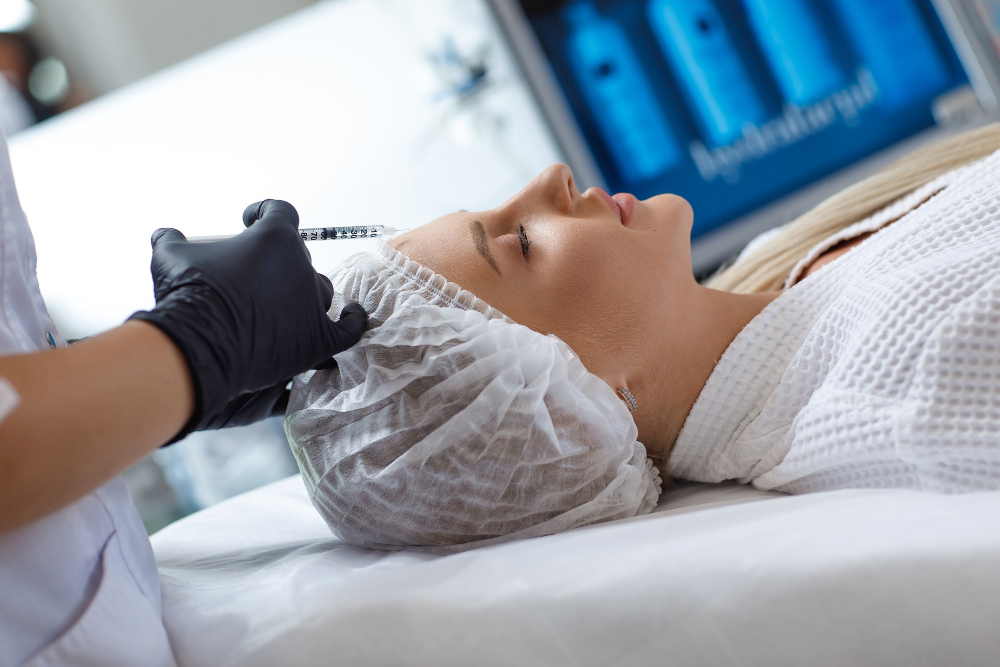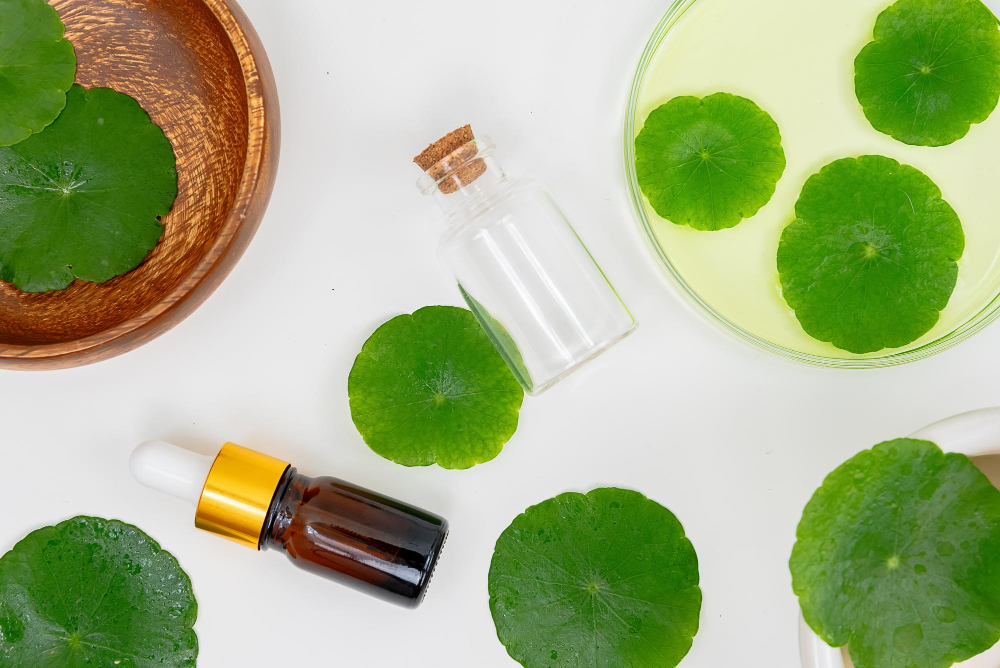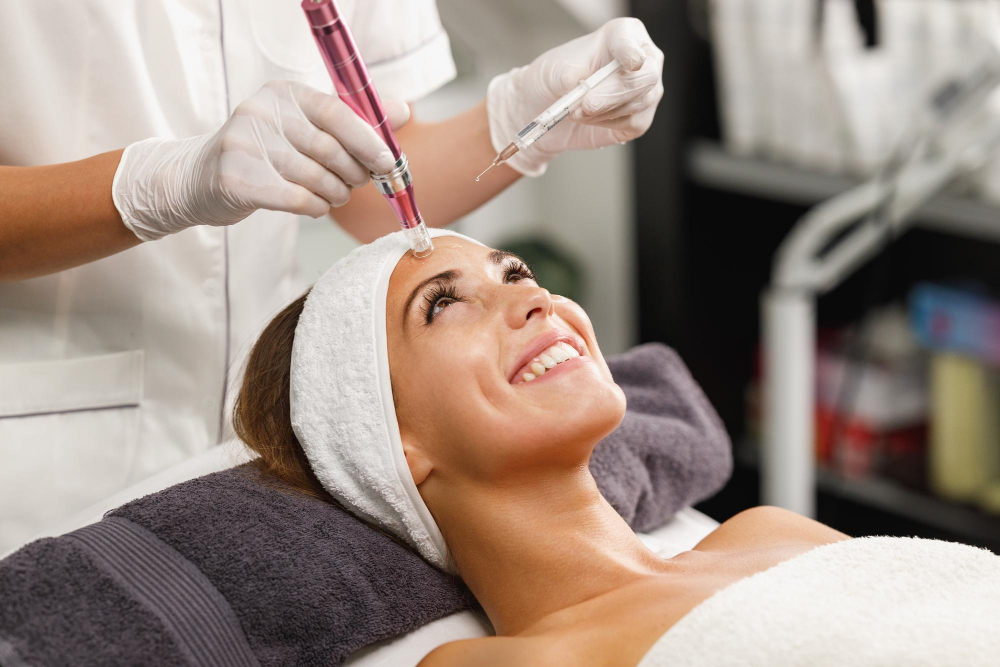Exosomes in Aesthetics: How They Work & Why They’re in High Demand

Exosomes are revolutionizing the field of regenerative aesthetics, offering a cutting-edge approach to skin rejuvenation, anti-aging, and tissue repair. Unlike traditional treatments that rely on dermal fillers or neurotoxins, exosome therapy harnesses the power of cell communication and regenerative medicine to enhance skin quality from within. As demand for non-invasive and highly effective solutions grows, leading innovations are exosomes in aesthetics.
This article will explore what exosomes are, how they work in aesthetic treatments, their key benefits, and safety considerations, helping medical aestheticians stay ahead of industry advancements.
What Are Exosomes?
Exosomes are microscopic extracellular vesicles (EVs) released by almost all cell types, playing a vital role in intercellular communication. These nano-sized vesicles, typically 30-150 nanometers in diameter, act as carriers of essential biomolecules such as proteins, lipids, RNA, and growth factors. They function as messengers, transferring signals between cells to regulate various biological processes, including tissue repair, inflammation reduction, and immune response.
In aesthetic medicine, exosomes have garnered attention for their ability to trigger cellular regeneration and stimulate collagen and elastin production. Unlike traditional dermal fillers that physically add volume, exosomes encourage the skin to rejuvenate naturally, making them a preferred choice for patients seeking long-term skin health improvements. Exosomes are tiny extracellular vesicles (EVs) released by cells to facilitate cell-to-cell communication. They contain a variety of bioactive molecules, including growth factors, RNA, proteins, and lipids, which play a crucial role in cell regeneration and tissue repair.
Origin of Exosomes in Aesthetic Medicine
Exosomes used in aesthetic treatments are primarily derived from mesenchymal stem cells (MSCs) due to their exceptional regenerative properties. However, there are also plant-derived exosomes on the market today, sourced from Centella asiatica, these cutting-edge exosomes work deep within the skin to repair, rejuvenate, and protect.
Researchers discovered that exosomes possess the same regenerative potential as stem cells without the ethical concerns or potential complications associated with direct stem cell injections. Their ability to repair damaged tissue, reduce oxidative stress, and enhance skin hydration makes them ideal for aesthetic applications, including skin rejuvenation, hair restoration, and post-procedure healing.
Due to their biological compatibility, exosome-based therapies integrate seamlessly with other aesthetic treatments such as microneedling, laser resurfacing, and chemical peels, significantly improving treatment outcomes and patient satisfaction.

How Do Exosomes Function?
Exosomes work by acting as biological messengers, facilitating the exchange of molecular information between cells. They contain a rich composition of growth factors, cytokines, microRNAs, and peptides, all of which contribute to skin and tissue regeneration.
When applied to aesthetic treatments, exosomes exert their effects through the following mechanisms:
- Cellular Communication: They enhance the skin’s ability to self-repair by transmitting signals that activate surrounding cells.
- Collagen and Elastin Stimulation: Exosomes prompt fibroblasts (skin-repairing cells) to ramp up production of collagen and elastin, leading to firmer, more youthful-looking skin.
- Anti-Inflammatory Benefits: Exosomes help reduce redness, swelling, and irritation, making them beneficial for post-procedure recovery and sensitive skin types.
- Skin Barrier Enhancement: By supporting skin hydration and moisture retention, exosome treatment for face improves skin texture, elasticity, and resilience.
- Hair Follicle Activation: In hair restoration treatments, exosomes stimulate dormant hair follicles, leading to thicker, stronger hair growth.
By leveraging these unique biological properties, exosome therapy provides a powerful alternative to traditional cosmetic treatments, ensuring long-term improvements in skin health and regeneration.
- They act as messengers, delivering regenerative signals between skin cells.
- Stimulate collagen and elastin production, improving skin texture and firmness.
- Promote skin healing and reduce inflammation, making them effective for post-procedure recovery.
- Enhance cellular turnover, helping to rejuvenate aged or damaged skin.
How Exosomes Work in Aesthetic Treatments
Exosome therapy works by stimulating the skin’s natural regenerative processes, making it a powerful tool for addressing common aesthetic concerns such as wrinkles, loss of elasticity, uneven tone, and hair thinning.
Mechanisms of Action:
- Collagen and Elastin Production: Exosomes trigger fibroblast activity, leading to increased production of collagen and elastin, essential for firm and youthful skin.
- Skin Cell Regeneration: Exosomes for skin help repair damaged skin cells, improving overall skin tone, texture, and hydration.
- Anti-Inflammatory Effects: They reduce redness and irritation, making them ideal for patients with sensitive or post-procedure skin.
- Hair Restoration: Exosomes for hair loss stimulate hair follicle regeneration, improving hair density and scalp health.
Benefits & Applications of Exosome Therapy
Exosomes treatments are highly versatile and can be integrated into various aesthetic treatments for enhanced skin rejuvenation, hair restoration, and post-procedure recovery.
Key Benefits:
- Deep Skin Rejuvenation – Stimulates natural skin renewal without adding artificial volume.
- Enhances Hydration & Elasticity – Promotes moisture retention, making skin appear plumper and more youthful.
- Supports Healing & Recovery – Speeds up tissue repair after laser treatments, microneedling, and chemical peels.
- Safe & Minimally Invasive – Works without the need for synthetic chemicals or surgical interventions.
- Effective for Hair Restoration – Strengthens hair follicles and reduces hair thinning.
Popular Aesthetic Applications:
- Skin rejuvenation treatments (microneedling with exosomes, laser resurfacing, chemical peels)
- Hair restoration procedures for thinning hair and scalp health
- Combination therapy with PRP, dermal fillers, and mesotherapy for enhanced skin renewal
For high-quality exosome treatments, medical practitioners can buy Exojuv – premium exosome product designed for advanced regenerative aesthetics.
Why Exosome Therapy Is in High Demand
The increasing popularity of exosome therapy is driven by its ability to deliver natural, long-lasting results with minimal downtime.
- Minimally Invasive: No incisions, no downtime, and fast recovery.
- Highly Effective: Patients see visible improvements in skin texture, elasticity, and tone.
- Compatible with Other Treatments: Can be used with microneedling, PRP, lasers, and RF treatments to enhance outcomes.
- Future of Regenerative Aesthetics: Recognized as an emerging trend in aesthetic medicine, highlighted at IMCAS Paris 2025.

Safety & Considerations
While exosome therapy is considered safe and well-tolerated, medical practitioners should follow proper treatment protocols to ensure optimal results.
Potential Side Effects:
- Mild redness or swelling at the injection site
- Temporary sensitivity post-treatment
- Rare allergic reactions, depending on patient history
Who Is a Suitable Candidate?
- Patients with signs of aging (wrinkles, sagging, dull complexion)
- Those seeking non-invasive skin rejuvenation
- Individuals experiencing hair thinning or scalp concerns
Frequently Asked Questions (FAQ)
Which is better, Profhilo or Exosomes?
It’s difficult to say, since both are designed to achieve different things. To illustrate: Profhilo is a hyaluronic acid-based injectable designed for deep hydration, while exosomes work at a cellular level to stimulate skin regeneration. Patients needing instant hydration may prefer Profhilo, while those looking for long-term skin repair benefit more from exosome therapy.
Which is better, PRP or Exosomes?
Even though PRP (Platelet-Rich Plasma) and Exosomes are both regenerative treatments, exosomes are more potent due to their high concentration of growth factors and signaling molecules. Since PRP relies on the patient’s own platelets, exosomes deliver consistent regenerative benefits.
Can exosomes tighten skin?
Yes! Exosome therapy stimulates collagen and elastin production, leading to improved skin firmness and elasticity, reducing sagging over time.
What is the difference between Botox and Exosomes?
- Botox works by relaxing facial muscles, reducing wrinkles caused by movement.
- Exosomes regenerate skin cells, improving skin quality, texture, and elasticity naturally.
What is the alternative to exosomes?
While alternatives include PRP, stem cell therapy, and polynucleotides, all of which offer regenerative benefits, exosomes remain superior in terms of cellular signaling and tissue repair.
Conclusion
Exosomes are shaping the future of regenerative aesthetics, offering non-invasive, highly effective solutions for skin rejuvenation, healing, and hair restoration. Their ability to stimulate collagen, improve skin elasticity, and accelerate tissue repair makes them a must-have treatment in modern aesthetic medicine. Medical professionals looking to buy exosomes in the UK can do so through Best Buy Fillers online shop.
Continue reading

Radiesse or Juvederm? Which One Should You Use for Facial Contouring?
Facial contouring is more than just adding volume – it’s about sculpting definition, correcting asymmetries, and enhancing structure. Achieving those goals requires the right product, precise technique, and a deep understanding of dermal filler properties. Among the most commonly used injectables in aesthetic medicine, Radiesse and Juvederm stand out as…
Read More
Radiesse vs Sculptra: Which Collagen-Stimulating Filler Is Better?
As the popularity of natural beauty trends, like the no-makeup makeup look, continues to rise, the demand for subtle, long-lasting enhancements has reshaped the filler industry as well. More patients are turning to treatments that enhance their features while correcting concerns like uneven texture or volume loss, all without compromising…
Read More
Non-Surgical Jaw Definition: Radiesse Jaw Before and After Transformation
In the age of defined features and sculpted profiles, jawline contouring has become one of the most in-demand aesthetic procedures among both male and female patients. But not everyone is ready for surgery or permanent changes. That’s where non-surgical options like Radiesse jawline enhancement come in, offering a high-impact transformation…
Read More